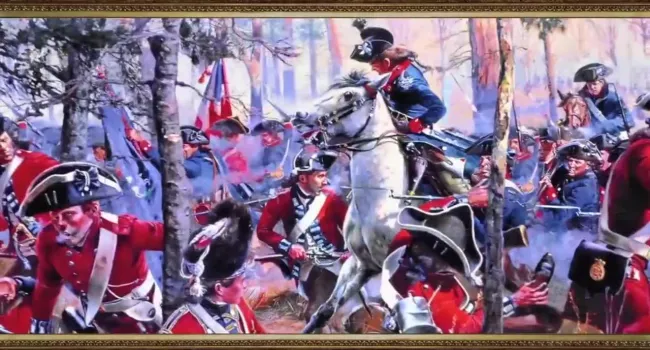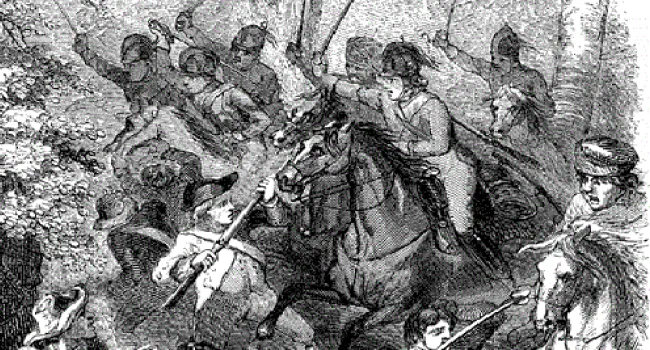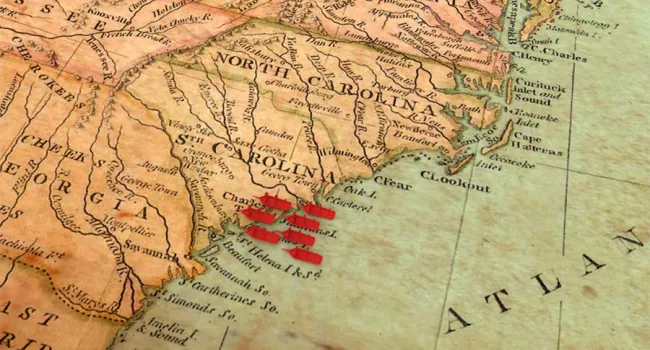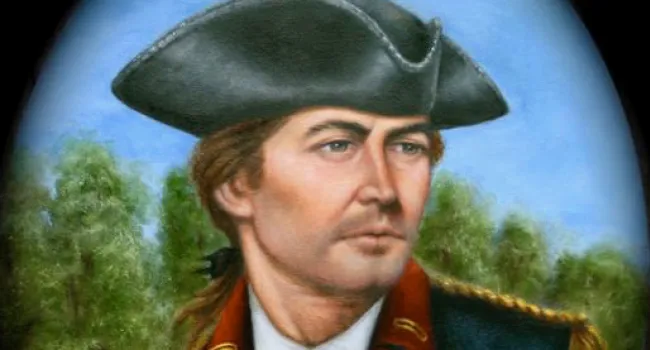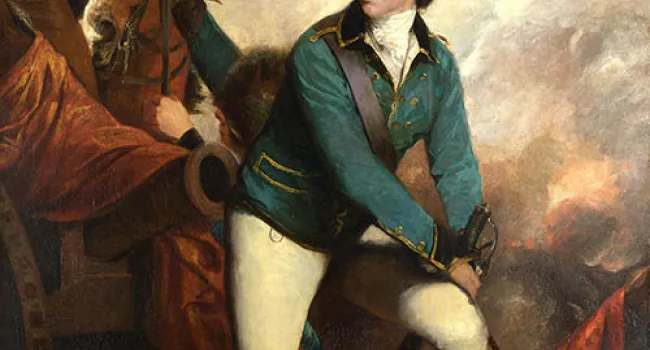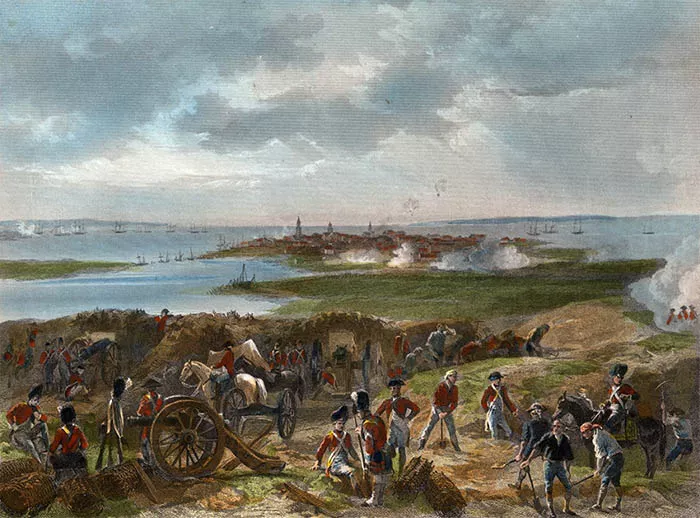
The War for American Independence began well for the Patriots in the South. In the city of Charles Town, South Carolina (known as “Charleston” after the war)—an unfinished palmetto fort withstood the cannon balls of the British fleet in 1776. Men like William Moultrie, Francis Marion, William Jasper, and others became Revolutionary War heroes.
Four years later—the American Revolution was deadlocked. In the North, battles were won and lost with little effect. General Henry Clinton and the British high command decided they needed a “Southern Strategy.”
The British decided to bring the war to the South because (1) they hadn’t really won any major victories and (2) there were a lot of loyalists in the South, particularly in the two Carolinas. If they captured the Southern colonies, the British knew they would have control over the most valuable colonies. More than 6,000 British troops were shipped from New York to Charles Town (view map). After a short siege, the city fell.
Soon the entire Continental Army of South Carolina surrendered, and Charles Town found itself under martial law. Paroles were revoked and rebels were ordered to swear an “oath of allegiance” to the British crown. Charles Town would supply the British army with provisions and become the base of operations to secure the interior of the Carolinas and achieve victory in the South.
Vocabulary Terms
Continental Army - created by the Second Continental Congress and commanded by George Washington.
Siege - a military operation in which enemy forces surround a town or building, cutting off essential supplies, with the aim of compelling the surrender of those inside
Standards
- 4-3 The student will demonstrate an understanding of the conflict between the American colonies and England.
- 8-2 The student will demonstrate an understanding of the causes of the American Revolution and the beginnings of the new nation, with an emphasis on South Carolina’s role in the development of that nation.
La Guerra por la Independencia Americana comenzó bien, una fuerte de palmeras inacabada resistió las bolas de cañón de la flota británica en 1776. Hombres como William Moltrie, Francis Marion, William Jasper, y otros se convirtieron en héroes de la Guerra Revolucionaria.
Cuatro años más tarde, la Revolución Americana estaba estancada. En el Norte, las batallas fueron ganadas y perdidas con poco efecto. El general Henry Clinton y el alto mando británico decidieron que necesitaban una "Estrategia del Sur".
Los británicos decidieron llevar la guerra al Sur porque (1) no habían ganado ninguna victoria importante y (2) habían muchos leales en el Sur, particularmente en las dos Carolinas. Si capturaran las colonias del sur, los británicos sabían que tendrían el control sobre las colonias más valiosas. Más de 6.000 soldados británicos fueron enviados desde Nueva York a Charles Town (ver mapa). Después de un corto asedio, la ciudad cayó.
Pronto todo el Ejército Continental de Carolina del Sur se rindió, y Charles Town se encontró bajo la ley marcial. Los paroles fueron revocados y se ordenó a los rebeldes jurar un "juramento de lealtad" a la corona británica. Charles Town suministraría al ejército británico con provisiones y se convertiría en la base de operaciones para asegurar el interior de las Carolinas y lograr la victoria en el Sur.
Términos de Vocabulario
Ejército Continental - creado por el segundo Congreso Continental y comandado por George Washington.
Asedio - una operación militar en la que las fuerzas enemigas rodean una ciudad o un edificio, cortando suministros esenciales, con el objetivo de obligar a rendirse a los que están en su interior.
